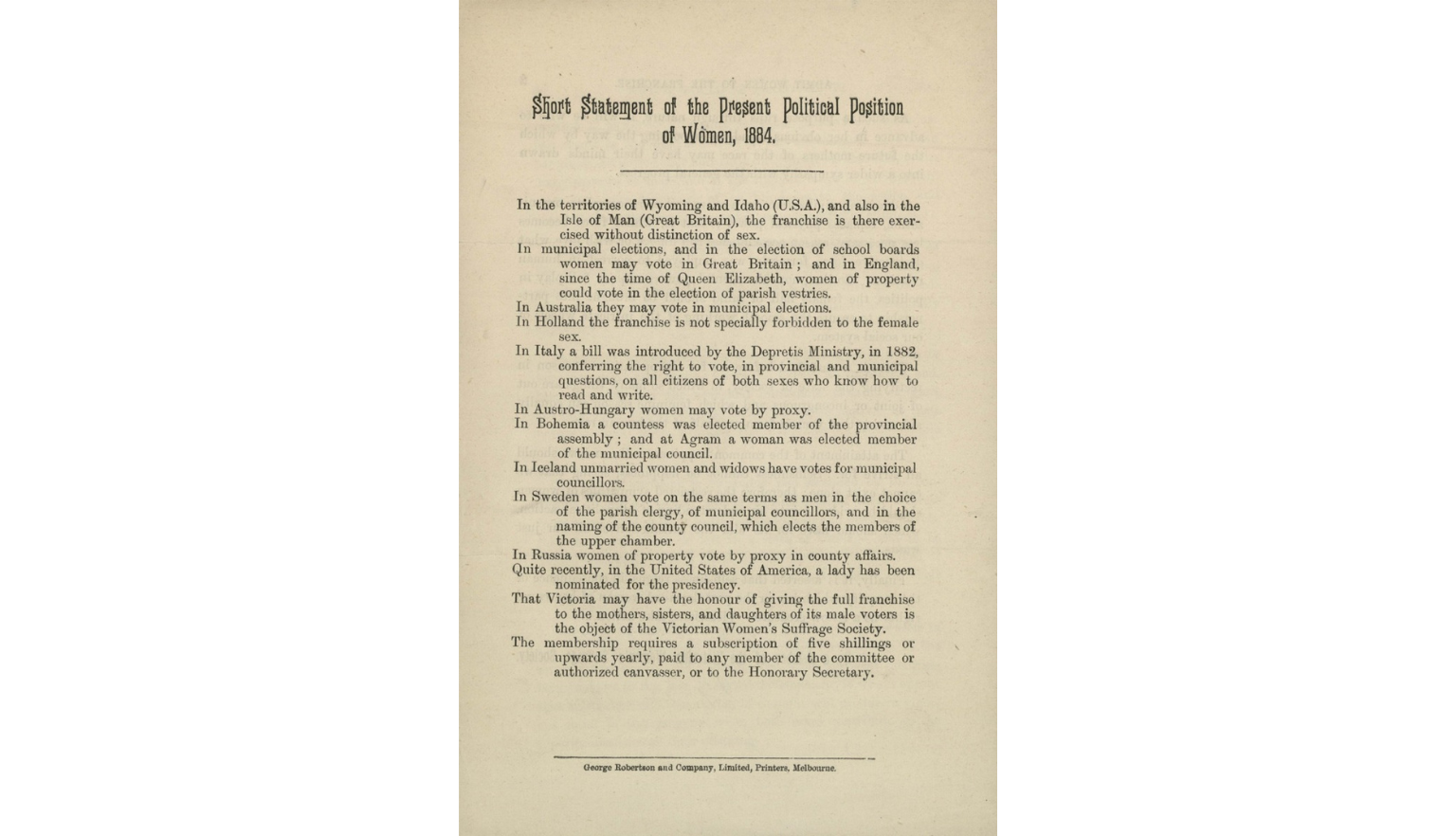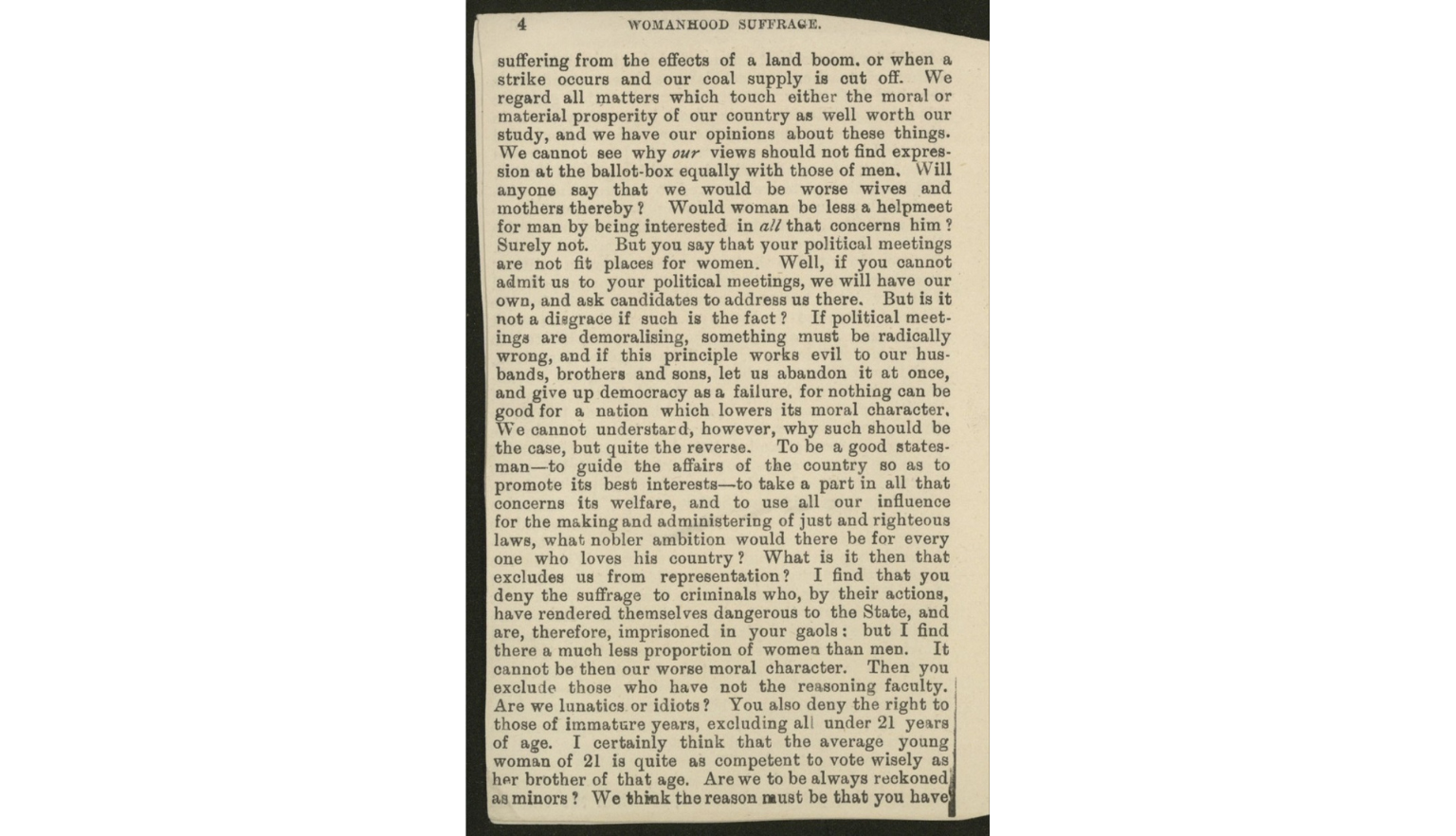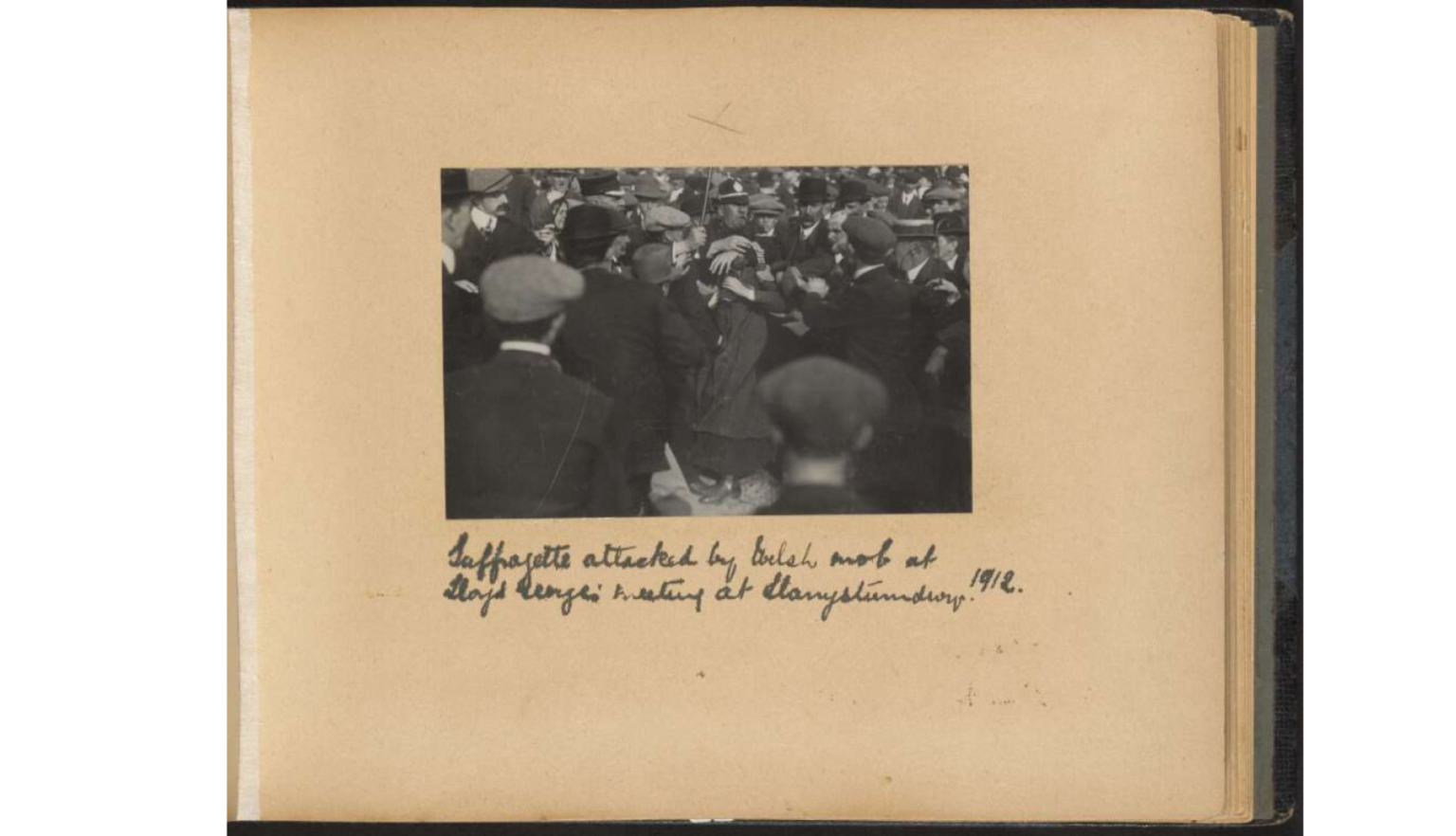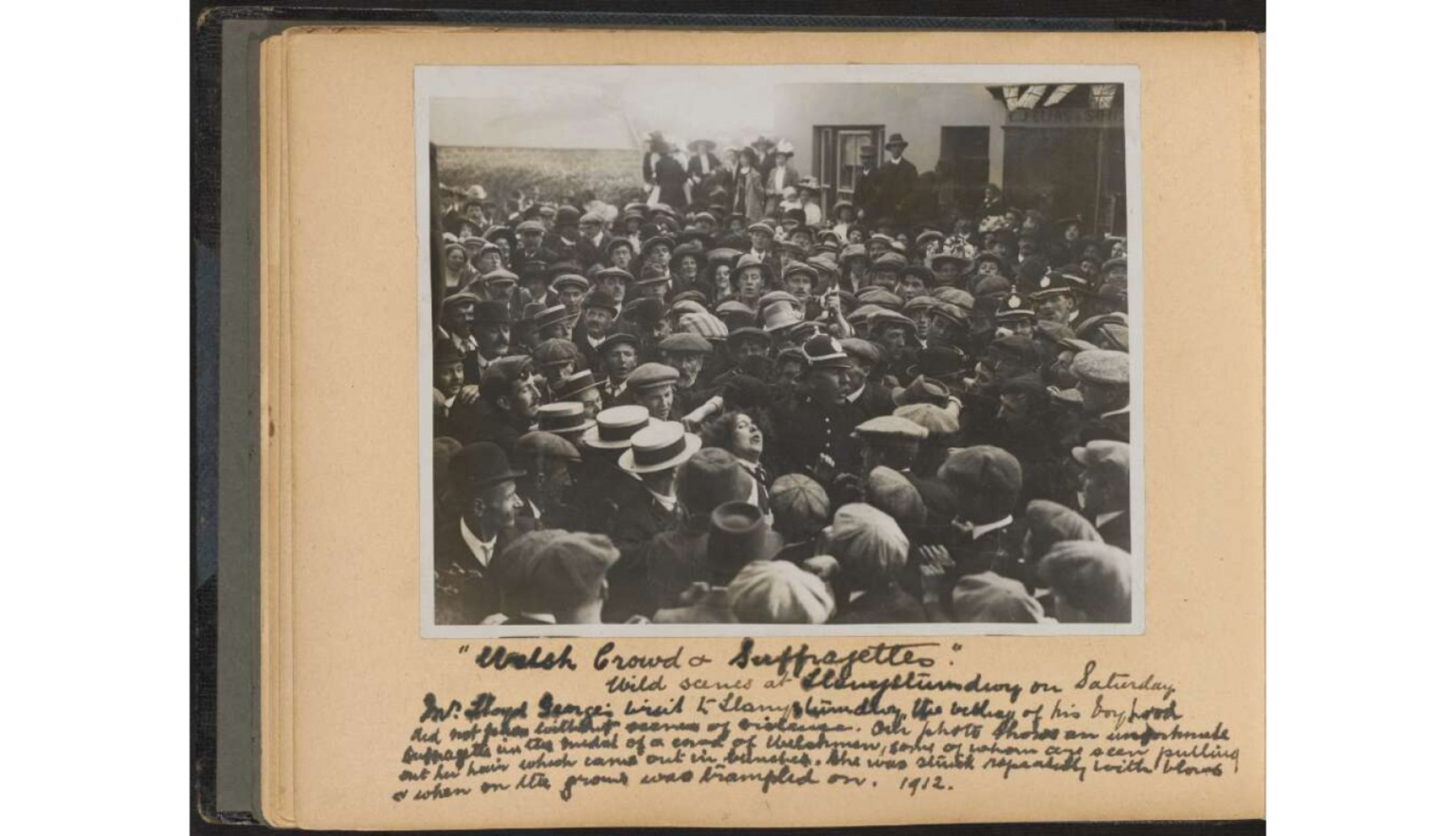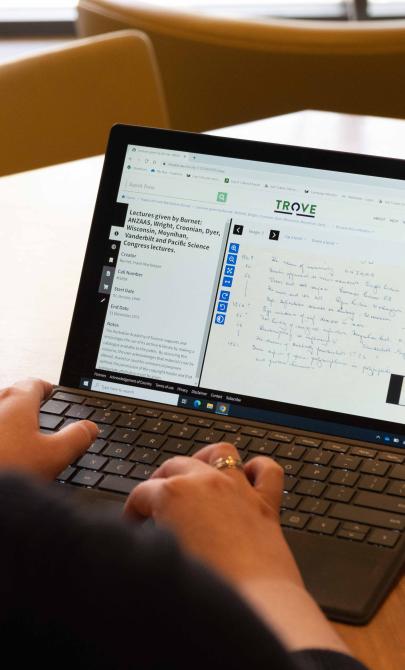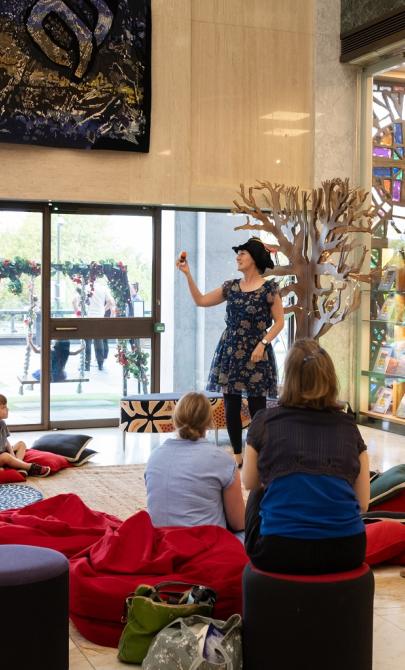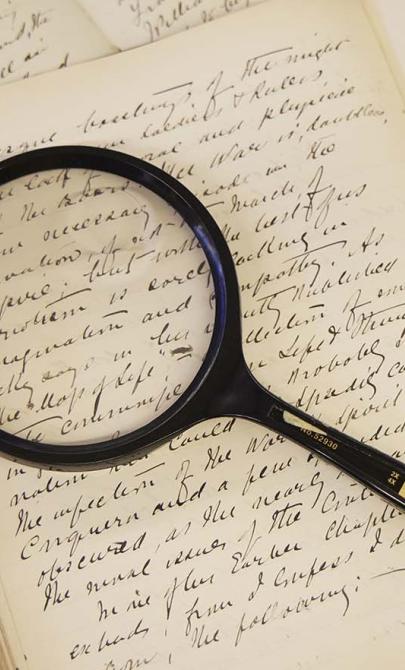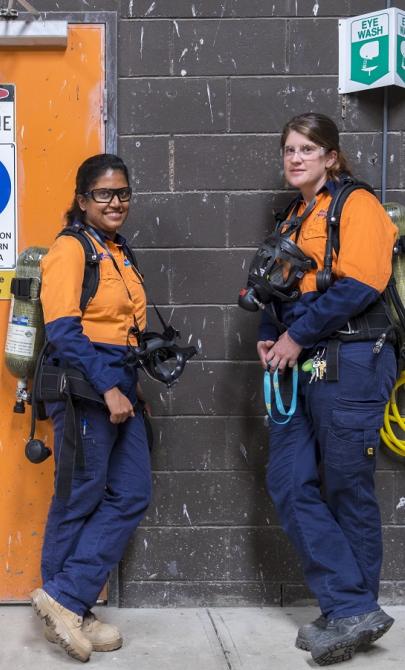Women's suffrage
About the women's suffrage movement
Suffrage refers to a person’s right to vote in a political election. Voting allows members of society to take part in deciding government policies that affect them. Women’s suffrage refers to the right of women to vote in an election.

Sash with inscription: Votes for women, 1908, nla.gov.au/nla.obj-135770450
Women’s suffrage was a key achievement of the First Wave feminists of the 19th and early 20th centuries. Historically, some societies have allowed some women to vote, but the first independent, self-governing nation to give all women citizens the vote was New Zealand in 1893.
Arguments for change
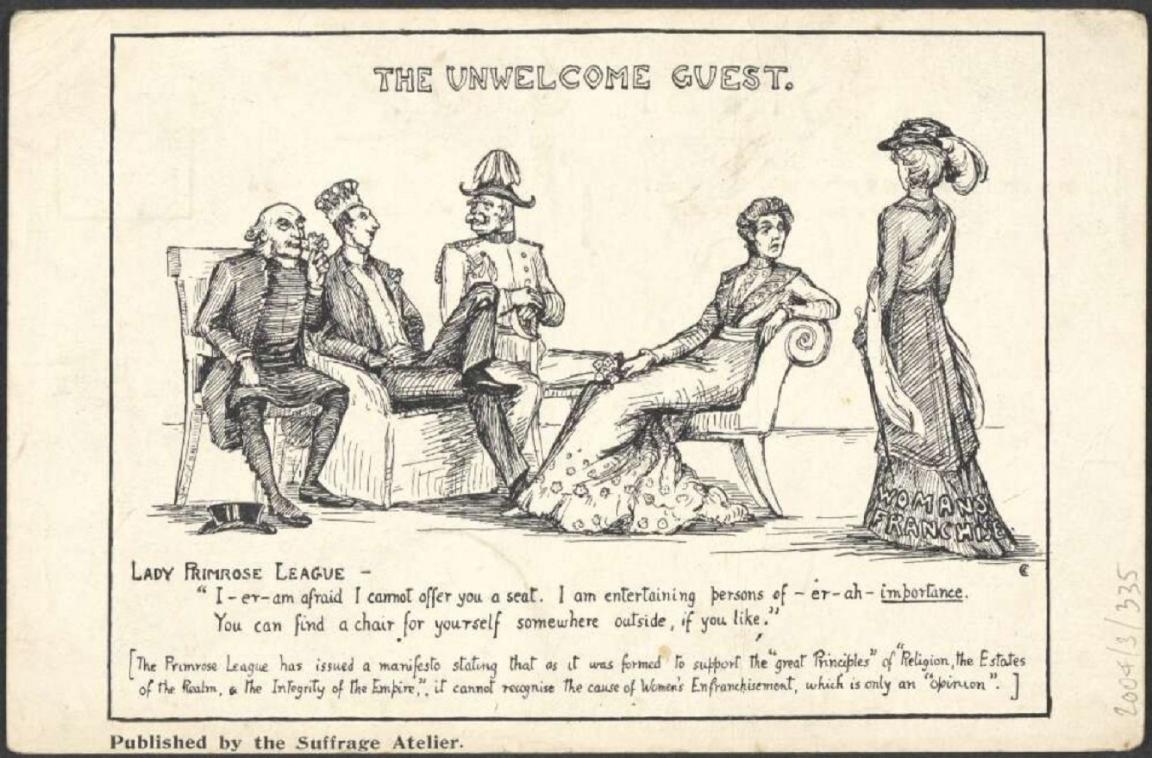
Bessie Mabel Rischbieth, Suffragette cards and notepapers, nla.gov.au/nla.obj-398193922
Bessie Mabel Rischbieth, Suffragette cards and notepapers, nla.gov.au/nla.obj-398193922
Before women were given the vote, many men believed that women did not want to vote, and were not educated or intelligent enough to hold an opinion. Many believed that women should focus on raising children and doing housework, enabling men to decide on the policies that affected women.
People who argued for women’s suffrage claimed that women were intelligent and educated. They argued that, as they could own property and pay taxes, their vote should be counted.
Activity 1: Arguing for change
Consider the arguments put forward in these early publications as to why women should be granted the vote.
- Make a list of the reasons given.
- Can you add your own?
Speaking their mind
Many women spoke their mind in public about women's suffrage, some were fearful of doing so.
Listen to Dr Béatrice Bijon talk about the fear many women had about speaking out. She quotes British suffragette Margaret Nevinson
Activity 2: Get on your soapbox
View the images of women speaking their mind in public about women’s suffrage, and listen to Dr Béatrice Bijon talk.
- What is a ‘soapbox’ and where did the term originate?
- What risks does someone face when they stand on a soapbox and give a speech?
- What issues would you stand and talk about, in a crowded street? Consider holding a soapbox session in your classroom.
The United Kingdom and United States
The women’s suffrage movement was particularly strong in the United Kingdom, the United States and Australia.
In the United Kingdom, the Women’s Social and Political Union, under the leadership of Emmeline Pankhurst, fought hard for change. Known as the suffragettes, they endured a particularly violent and slow journey to women’s suffrage—more so than their counterparts in Australia. Agitators for women’s suffrage were often criminalised or persecuted for their actions. Many used aliases to protect their real identity.
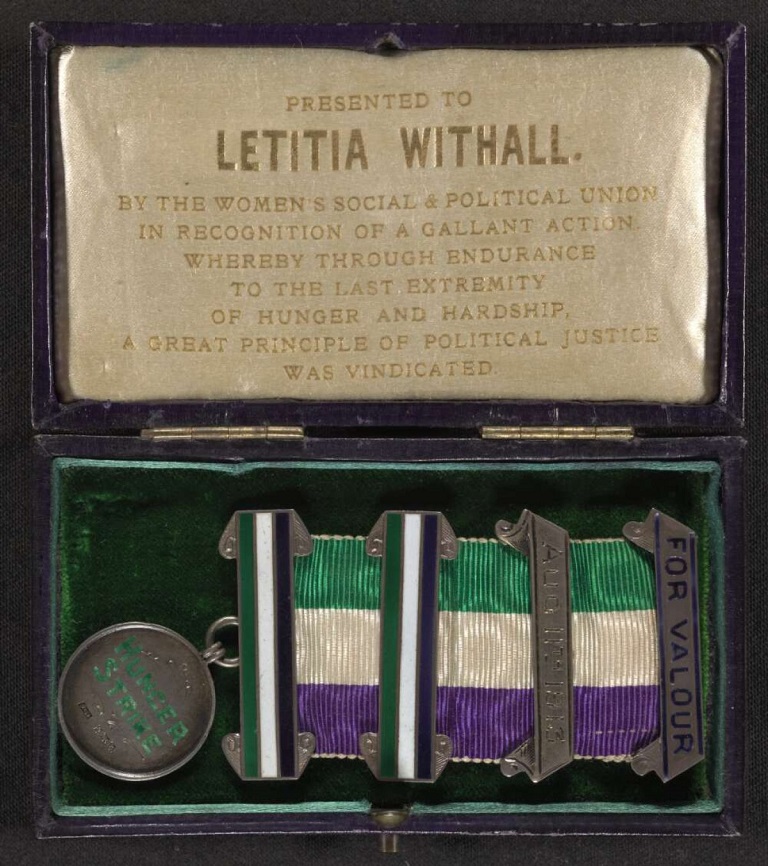
Hunger strike medal presented to Letitia Withall by the Women's Social & Political Union, 1913, nla.gov.au/nla.obj-139607609
Many activists, such as Louie Cullen, were arrested, endured weeks of imprisonment and went on hunger strikes. Some were force-fed (via tubes down their nostrils), beaten and publicly humiliated by police and male observers. Some were sexually assaulted. Some, like Emily Davison, even died for their cause. Davison was trampled and killed by a racehorse while protesting on a racetrack during the running of the 1913 Epsom Derby.
Listen to Dr Béatrice Bijon detail the treatment of the women of the Women’s Social and Political Union in the United Kingdom (known as the suffragettes) who stood up for the cause of women gaining the vote.
The suffrage movement in Australia
In Australia, the suffrage movement occurred at roughly the same time as the move towards Federation, which sought to unite Australian states into one nation. Grassroots community groups formed, such as the Women’s Suffrage League (established by Mary Lee, Mary Colton and later joined by Catherine Helen Spence), the Working Women’s Trade Union, the Woman's Christian Temperance Union and the Social Purity Society. These groups marched, protested, lobbied and organised petitions to try to change public and political opinion about women’s right to vote. They also wrote and publicly performed songs, plays and poems to raise awareness and support.
Listen to Dr Clare Wright recount the experience of suffragists in Australia.
The Cat and Mouse Act
This poster refers to an Act of parliament that was rushed through to make it easier for authorities to deal with hunger-striking women. It was colloquially called the Cat and Mouse Act. It shows a cat holding a woman in its jaws—suggesting she is a mere mouse to be played with or eaten. She wears a Women’s Social and Political Union banner in the colours of the suffrage movement: green, white and violet.
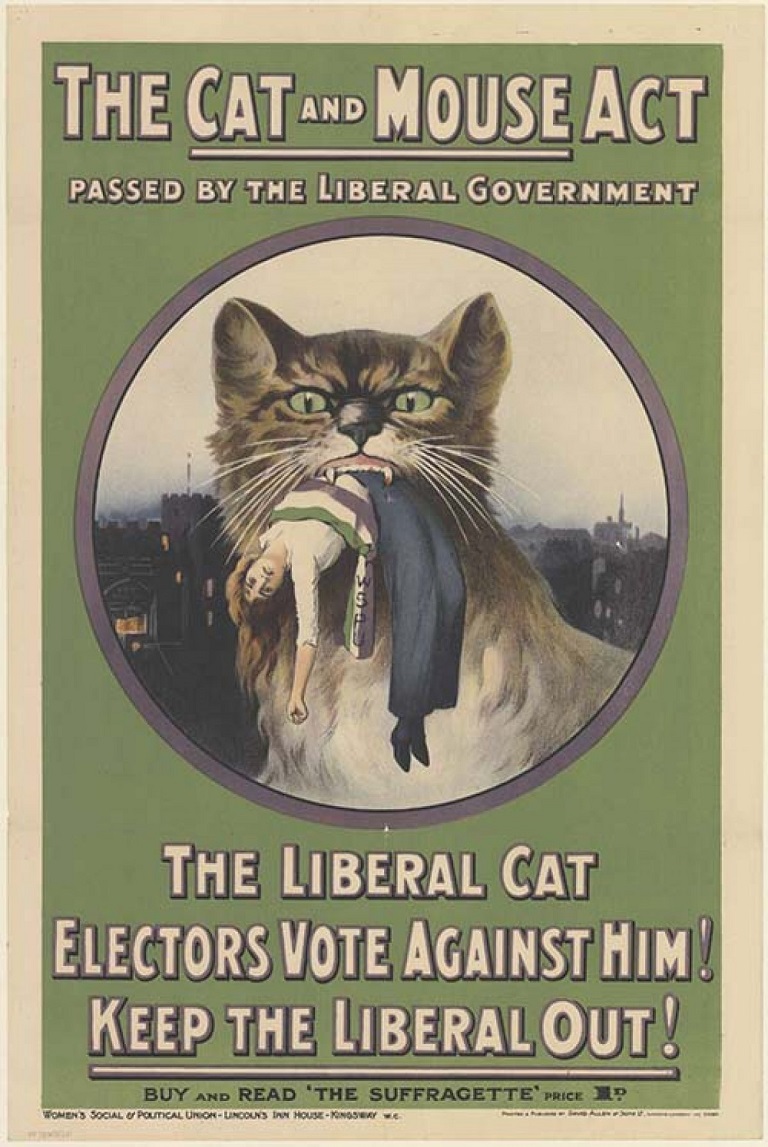
Bessie Mabel Rischbieth, Cat and Mouse Poster, nla.gov.au/nla.obj-421792914
Listen to Dr Béatrice Bijon explain the poster’s origins:
Activity 2: Propaganda and the cause
- What symbols and devices does this propaganda use to evoke sympathy for the suffragette cause?
The right to vote
In 1894, South Australian women gained the right to vote. At the same time, they became the first women in the world to be able to stand as candidates in state elections.
With Australia a newly federated country, the Commonwealth Franchise Act 1902 allowed non-Indigenous women in all states to vote and stand as candidates in federal elections.
It wasn’t until 1962 that Aboriginal and Torres Strait Islander women were granted the right to vote.
The first women members of parliament
In the following federal election, four women stood as candidates. They were Vida Goldstein, Selina Anderson and Nellie Martel in the House of Representatives, and Mary Ann Moore Bentley in the Senate. None of them were elected.
Nearly 20 years passed before a female candidate was elected; in 1921, Edith Cowan became the first woman member of an Australian parliament when she was elected to the Legislative Assembly of Western Australia.
In 1943, in the middle of the Second World War, two women were finally elected to the Australian federal parliament - over 40 years since they had been given the right to run as candidates. Enid Lyons was elected to the House of Representatives and Dorothy Tangney to the Senate.
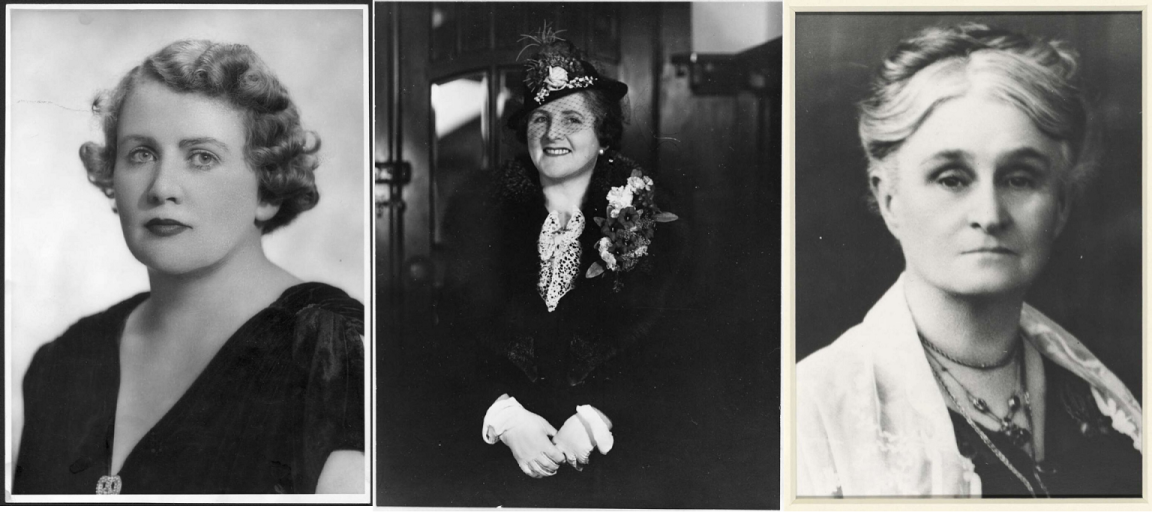
Broothorn Studios, Portrait of Dorothy Tangney, nla.gov.au/nla.obj-136682831, Portrait of Dame Enid Lyons nla.gov.au/nla.obj-136647766, Portrait of Edith Cowan nla.gov.au/nla.obj-136673287
Broothorn Studios, Portrait of Dorothy Tangney, nla.gov.au/nla.obj-136682831, Portrait of Dame Enid Lyons nla.gov.au/nla.obj-136647766, Portrait of Edith Cowan nla.gov.au/nla.obj-136673287
Activity: Review and reflect
- What major events happened in the history of both countries that preceded women gaining the vote?
- How did these events help the argument for women’s suffrage?
- How do the experiences of women fighting for the vote compare between the two countries?
